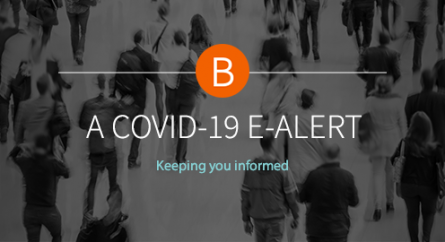Client Alert: PPP Update – Handling the Necessity Questionnaire for PPP Loans $2M or More
The U.S. Small Business Administration (SBA) recently announced its plan to require Paycheck Protection Program (PPP) lenders to issue “loan necessity” questionnaires to all borrowers of PPP loans of $2 million or more. On October 26, 2020, the SBA published a notice seeking comments on the two proposed forms of loan necessity questionnaires – one for for-profit borrowers (Form 3509) and one for non-profit borrowers (Form 3510). These questionnaires were put in place to “maximize program integrity and protect taxpayer resources” by collecting supplemental information to be used by SBA loan reviewers to evaluate the good-faith certification made on [the] PPP Borrower Application.
Background
As of August 8, 2020 (the closing date of the PPP program), the SBA had approved over 5 million loans worth in excess of $525 billion. With an average loan size of just over $100,000, at first blush a large majority of approved loans were small enough to avoid audit inquiries and reporting from borrowers concerning the “necessity” of the loan to support ongoing business operations in light of then-current economic uncertainty. As noted in a previous Bowditch alert, the SBA-approved Borrower Application Form 2483 required a good faith certification from an authorized representative of the Borrower that “[c]urrent economic uncertainty makes this loan request necessary to support the ongoing operations of the Applicant.” In guidance released in April 2020, the SBA clarified that borrowers must take into account “their current business activity and their ability to access other sources of liquidity sufficient to support their ongoing operations in a manner that is not significantly detrimental to the business.”
Many viewed this certification and related standard as arbitrary, overly subjective, and without sufficient guidelines or criteria, leading to much anxiety and concern over subsequent audits and second-guessing of whether a borrower in fact had sufficient cash reserves, business prospects and other adequate sources of liquidity. The SBA and Treasury publicly warned companies that the necessity certification would be subject to audit and sharp penalties if investigators later determined that the economic status and prospects were such that the certification was not, or could not have been, made in good faith. After these initial warnings, SBA limited the audit prospects by allowing a safe harbor for all loans with a principal loan amount of less than $2 million.
Loan Necessity Questionnaire
The SBA questionnaires raise many issues and concerns for those borrowers with larger payrolls, and hence higher loan amounts. A borrower has only 10 business days from receipt to hand back the completed questionnaire to its lender, along with any supporting documentation. Form 3509, applicable to for-profit borrowers, groups the questions into a “Business Activity Assessment” and a “Liquidity Assessment,” and requires the borrower to submit supporting documentation to support its responses.
The Business Activity Assessment covers the following:
(i) gross revenue for Q2 2020 vs. 2019; (ii) whether borrower subject to a local or state shut-down order; (iii) whether borrower was subject to a state or local order that significantly altered its operations; (iv) whether borrower voluntarily ceased or altered operations due to COVID-19; and (v) whether borrower had any capital improvement projects since March 2020 not related to COVID-19.
The Liquidity Assessment inquires into different financial metrics, including but not limited to the following:
(i) cash and cash equivalents immediately before submission of the loan application; (ii) whether borrower paid any dividends or distributions to its owners; (iii) prepayment of any outstanding debt before due; (iv) reporting of salaries to highly paid employees and owners (over $250k annually); (v) market capitalization (if publicly traded) and book value of shareholders’ equity (if private); and (vi) the existence of any parent company or affiliates, including private equity ownership, of borrower.
Tips on Handling the Questionnaire
An overall concern with the questionnaire is that it presents only a snapshot of financial conditions, and depends in part on business level and revenue results that were likely uncertain at the time the loan application was submitted. The subjective nature of the necessity standard led to many valid questions by borrowers as they certified the need for the loan:
- what level of cash reserves was sufficient to support ongoing business operations?
- what factors were present to allow a business to accurately predict Q2 2020 revenues?
- to what extent will unknown supply chain issues negatively impact business?
When completing the questionnaire, it is recommended that borrowers analyze and document any factors that reasonably played into its determination that the PPP loan was necessary to support ongoing business operations. Perhaps a borrower had certain cash reserves on hand at the time it applied for the loan, but such reserves may have also been earmarked to cover any number of budget shortfalls, decreased revenues, or increased operating expenses, either related or unrelated to COVID-19. In addition, a borrower’s Q2 revenue figure, standing alone, can be misleading if, for example, general business activity was down but revenues were higher due to a one-time, unexpected transaction or sale.
After analyzing supplemental information relevant to business activity and liquidity, it is recommended that borrowers work with counsel and their accounting professionals to gather any and all facts and additional documentation to support the good faith nature of the necessity certification. By doing so, borrowers will be better able to present all facts and circumstances that bear on the objective data sought by SBA in the questionnaire. Finally, borrowers should complete the “optional” section (1,000 characters max.) at the end of the Business Activity Assessment and Liquidity Assessment, as an opportunity to present any additional factors that bear on the information sought by the questionnaire.
Should you have questions regarding the questionnaire itself, or how best to complete the form and compile supporting documentation, please reach out to me or your attorney contact at Bowditch.
Categorized: Client Alerts, Publications
Tagged In: Small Business Administration, coronavirus, COVID-19, small business, PPP loans, form 3509, form 3510







